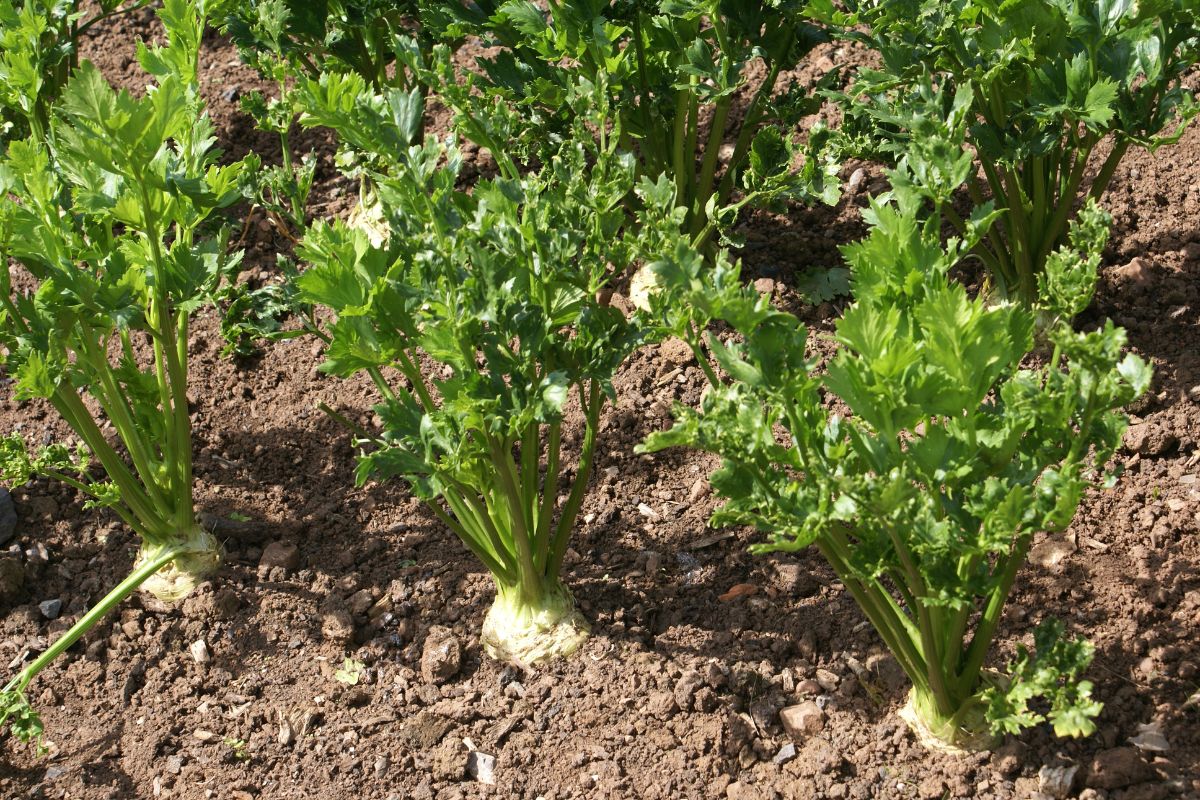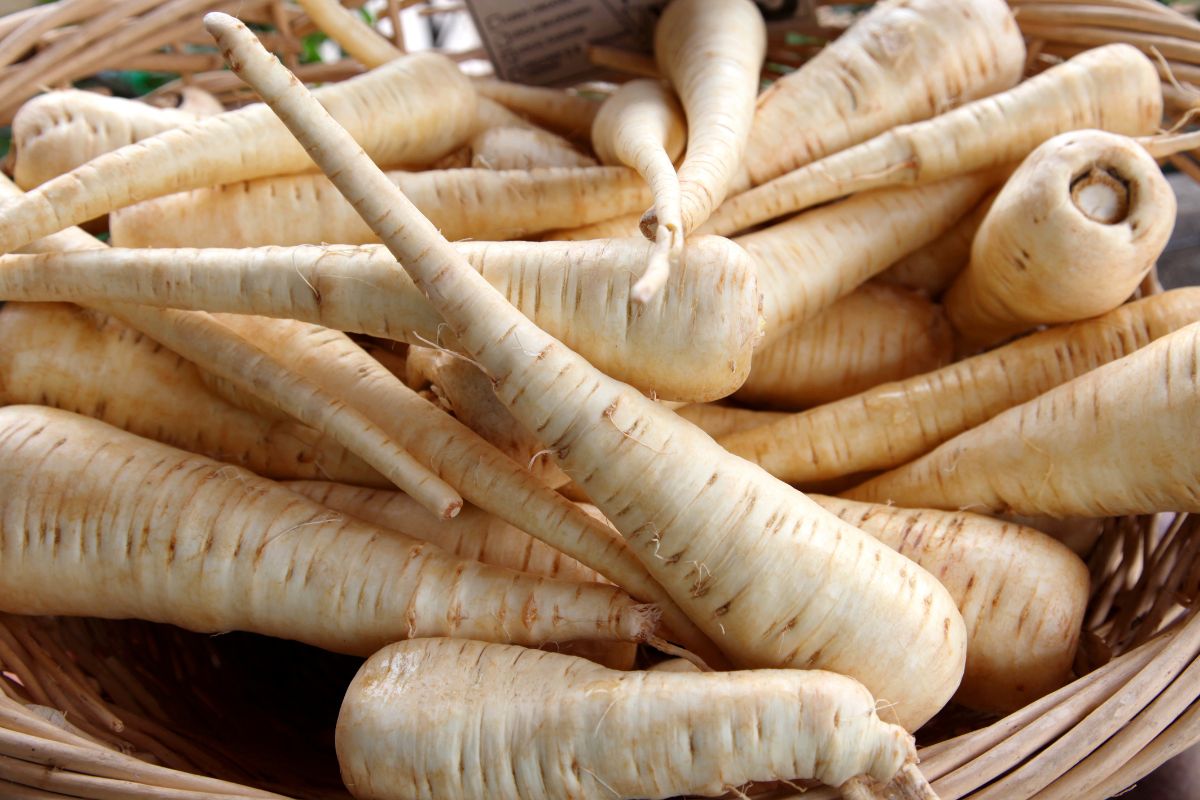What is Celeriac?
Celeriac is a root vegetable close to turnips and potatoes, which is why you can easily find a substitute for celeriac.
First grown in the Mediterranean basin, celeriac, also known as celery root, is now popular globally. Celeriac has many health benefits as it contains fiber, proteins, vitamins, carbon, and other minerals essential for the body.
It is also known for its medicinal value in Chinese medicine.

What Can You Make With Celeriac?
There are many things you can do with celeriac. The roots and leaves of celeriac are edible. Celery root is eaten raw or cooked in many ways, like most roof vegetables, such as boiling, baking, and grilling. Celeriac leaves are best eaten cooked and can be added to various recipes or as a side dish. Read our article and find out 3 Italian Recipes with Carrots and Celery and Onions.
Here are some ideas of what you can make using celeriac root and leaves.
Soups, Broth, and Purées
Celeriac is an ingredient you can use to make soups, broth, and purées. Ingredients can be boiled and then blended or allowed to boil, using the liquid to make the dish. The liquid is usually slightly thick, and you can add cornstarch to make it thicker.
Salads and Coleslaws
Celeriac can be eaten raw as an addition to a hearty, healthy salad. Mix with other ingredients, such as carrots, tomatoes, cabbage, or other vegetables, and squeeze a dash of lemon to add a punch. Grated celeriac mixed with mayonnaise and carrots will make a slaw.
Baked Dishes
Like most root vegetables, you can bake celeriac in dishes such as casseroles and pies. Boil and then mash the celeriac and add a protein and cheese; place the celeriac in layers and then bake. Bake a whole celeriac root and add cream, salt, and pepper to serve as a side to the main dish
Grilled Dishes
Chop celery root, marinate with other vegetables and meat, and place on a grill. Cooked celeriac will be soft and tender such that a fork will pass through easily when poked.
Stews
Celeriac is an excellent addition to stew; placed in the pot to boil with other ingredients and allowed to cook until the celeriac is soft and tender. Celeriac should not be left to boil for too long as the celeriac can be too soft and will crumble.
Fried
Cut the celeriac into small pieces and fry in a pan on the stovetop to make chips. Celeriac leaves are edible; heat some butter and other vegetables and a protein of choice to make a stir fry. You can add salt and pepper to taste.
Notable Celeriac Alternatives
Butternut Squash
Butternut squash is orange and is a sweeter substitute for celeriac. While butternut squash is not a root vegetable, it is a great substitute for celeriac in soups, pies, purées, and casseroles. It has a rich meaty taste, and you can add salt to make it savory.
Use butternut squash as a substitute for celeriac, where color is not an issue in the final look of the dish.
Carrots
Carrots are a root vegetable, and the choice of carrots as a celeriac substitute is per individual taste and color of the food. Some carrots are sweet in flavor; a dash of salt or celery seed will bring the flavor closer to celeriac. Carrots are the best celery root replacement for mashed dishes, salads, and soups.

Celery and Celery Seeds
Celery and celeriac have similar names but are not the same plant. They have a similar flavor; however, celery is watery. You may need to add corn stash or potatoes to thicken the dish, especially where the dish is in liquid forms, such as soups and purées. Add celery leaves or salt to achieve a mild flavor.
Celery seeds are also substitutes for celery root though the taste is different. How much celery seed to substitute for celery is one teaspoon of celery seeds is the equivalent of two stalks of celery.
Daikon Radish
Daikon radish resembles a white carrot or parsnip and has a mild flavor and a smooth exterior. Like most root vegetables, daikon radish is a celery root substitute eaten raw or cooked. Daikon radish can replace celery root in salads for a crunchy taste or in meat dishes. Add salt, paper, and spices to bring out the flavor.
Fennel Bulb
Fennel bulb is the best substitute for celeriac in raw dishes such as salads. The taste of fennel bulbs will alter when cooked, so this should be borne in mind when paired with other foods.
Jicama
Jicama is another root vegetable incorporated in a meal in place of celeriac. Jicama cooks much faster than most root vegetables; therefore, it is best eaten raw in salads. Peel and cut it into strips and add lemon juice and chili pepper. You can also marinate to bake, grill or fry.
Kohlrabi
Also known as German turnip, this vegetable is a celery root alternative. Despite the name, this is not a turnip. The stem and leaves are edible and can either be consumed raw in coleslaws and salads or cooked.
Parsley Root
Parsley is a common herb, but many do not know that parsley root is edible and a suitable celery root replacement. Parsley root has the same appearance as parsnip but is much paler and whiter.
Parsley root has a nutty flavor with a hint of carrot, popularly added in stock and soups, and you can grill, bake, fry or sauté. You can also serve parsley root cold, and most people will mix it with parsley leaves for flavor.
Parsnip
A parsnip looks like a white carrot, but it is not. Compared to celeriac, parsnip is sweeter in flavor and a great substitute. Parsnip is the best substitute for celery root in baked dishes. Add celery seed or salt to bring parsnip closer in taste to celeriac.

Potatoes
Potatoes are one of the most versatile vegetables, readily available in any grocery store. Potatoes are versatile and an excellent substitute for celeriac, but they are not edible raw and, therefore, not suitable in uncooked dishes like green salads.
Potatoes are suitable celery root substitutes for baking, boiling, and mashing. Potatoes are the best substitute for celery root in soups and broth.
There are many recipes for potatoes available; you can never go wrong. To get the celeriac flavor, add some salt and mashed potato leaves or celery seed.
Pumpkins
Pumpkins, even though not a root vegetable, are an excellent substitute for celeriac. The edible parts of a pumpkin are the leaves, seeds, and flesh. Pumpkins are a replacement for celery root when baking, grilling, and boiling to serve as a side dish.
Rutabaga
Rutabaga is also known as a Swedish turnip or Swede by the British and other commonwealth countries; Rutabaga is called a neep by scots. It is a root vegetable that can easily replace celeriac when cooking.
Rutabaga is a cross between a turnip and cabbage that is round and brownish-white in color.
Rutabaga is sweet with a slightly bitter taste. The leaves and roots are edible and can be cooked in various ways, such as boiling, fried, roasted, or added to a soup. Rutabaga can also be grated and added to a salad.
Sweet Potatoes
Sweet potatoes are another popular, easily available root vegetable that is an excellent substitute for celeriac. It is large and starchy with a sweet taste. Sweet potatoes are either yellow or white and are eaten raw or as a side dish fried, baked, boiled, grilled, or used on casseroles.
In some regions, sweet potatoes are sun-dried and cooked in ground peanut flour.

Turnips
Turnips are root vegetables that are white on the lower part where they are in the soil and purple, red, or green on the upper part exposed to the sun.
Turnips are a good substitute for celeriac; they have a potato texture and taste of a cross of cabbage and radish. Turnips tend to be bitter if the bulbs are too big.
Cook turnips like any other root vegetable, sautéed, fried, roasted, or mashed. Turnips can also be used in soup or broth or boiled as a side dish.
Tips for Selecting the Best Substitute
There are many vegetables you can use as substitutes for celeriac. It cannot be easy to decide which one would be best. There is no right or no wrong choice, but here are some of the things one would consider when selecting a celeriac alternative.
Color
Vegetables like carrots, butternut squash, and some sweet potatoes are yellow, which may not be suitable if you try to achieve a certain aesthetic for your dish. Therefore take note of this, as this will affect the dish you are preparing.
Texture and Flavor
When substituting celeriac, you may also want to consider the texture of the root vegetable. Parsley root and parsnips have a much more similar flavor close to celeriac.
Carrots, daikon radishes, jicama, and radishes have a similar texture to celeriac.
Type of Dish
The type of dish will also be something to consider when choosing a substitute for celeriac. Some of the vegetables cannot be eaten raw and will require a considerable amount of cooking. Another thing to remember is that vegetables can lose some nutrients when cooked.
Here is a guide to substitutes for celeriac depending on the kind of dish you are making.
Soup, Purée, and Broth
The best celeriac substitute for soups, purée, and broth are parsnips, celery seeds, parsley roots, carrots, jicama, and celery stalks.
Stew
Parsnips and parsley roots are best for substituting celeriac in stews. Add the celeriac substitute toward the end of cooking your dish and simmer until it is soft and tender.
Root vegetable substitutes are best for stew; other vegetables, such as pumpkins, will be too soft.
Baked Vegetable Dishes
Baked vegetables such as casseroles and pies make delicious side dishes such as pumpkin, parsnips, jicama, and radishes are the best substitutes for celeriac in baked vegetable dishes.
Root vegetables are best when grilled as a whole and served as a side dish.
Meat Roast
If you are making a meat roast and you do not have celeriac, parsley roots, potatoes, daikon radish, and celery salt are good alternatives. Marinate all ingredients with spices, herbs, and lemon before placing them on the grill.
Salads
Raw vegetables such as carrots, jicama, celery seeds, and celery stalks are the best substitute for celery roots in salads. Chop or grate and mix with other vegetables; add a dash of lemon or vinegar and a pinch of salt to taste. You can also add salad dressing if desired.
In Conclusion
Celeriac is a nutritious vegetable full of vitamins, high in fiber, and low in carbohydrates, making it a healthy addition to your meals. Celeriac is a versatile vegetable; you can create various delicious dishes.
Many vegetables are excellent celeriac replacements with the same health and nutritional value. The choice of a celeriac substitute will depend on the dish you want to make, the final aesthetics, taste, and texture.

Community of passionate writers and content creators who share a love for Italian heritage, culture, travel, food, and the Italian-American community. Our mission is to celebrate Italy’s rich history and traditions and connect with others who share the same passion.

